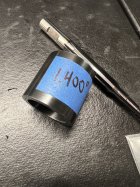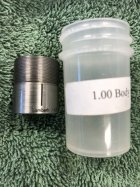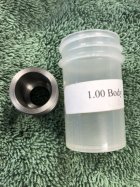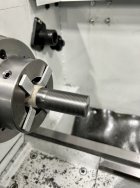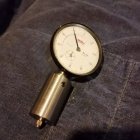I use this setup to check bolt float with receiver hand tight on barrel. One of the measurements I put on the data sheet as we discussed earlier. Then to the barrel vise, torque down, and check again to see if my .002 crush calculation comes out right. No gauge in the chamber, here I am checking the bolt nose/lug clearance against the end of the barrel.
I do a similar operation with the gauge in place. I also check with a new unfired case. In most instances the go gauge is too long, so it actually is a no go gauge.
A similar setup would work with your headspace gauge as you described.
Things change with big bore cartridges. That 458 Lott or 500 Jeffery needs a lot of room, if the hunter runs out of ammo he may wind up using cartridges found under the seat of the Land Rover. Who knows what make of cartridge and how big the case is.
I have a dial indicator holder that is machined to fit the end of the barrel, zero the indicator, push the holder against the end of the barrel, and the indicator shows how much the gauge is protruding. I will take a photo today and post.
I have several depth mikes, the easiest to use is one with a flat blade instead of round. One of the depth mikes has a short foot, it also works great. Again, I will take a few photos.
With over 50 years of using all types of micrometers, especially the depth mikes, I have my fingers trained to hold the darn things for proper measurements. Two fingers of the left hand pulling the foot back, the right hand turning the thimble. "Egg Shell" touch on the thimble!!! Lightly turn in the thimble and you will feel a solid stop at contact. Forget the little ratchet stem, after a time your finger sensitivity will increase.













